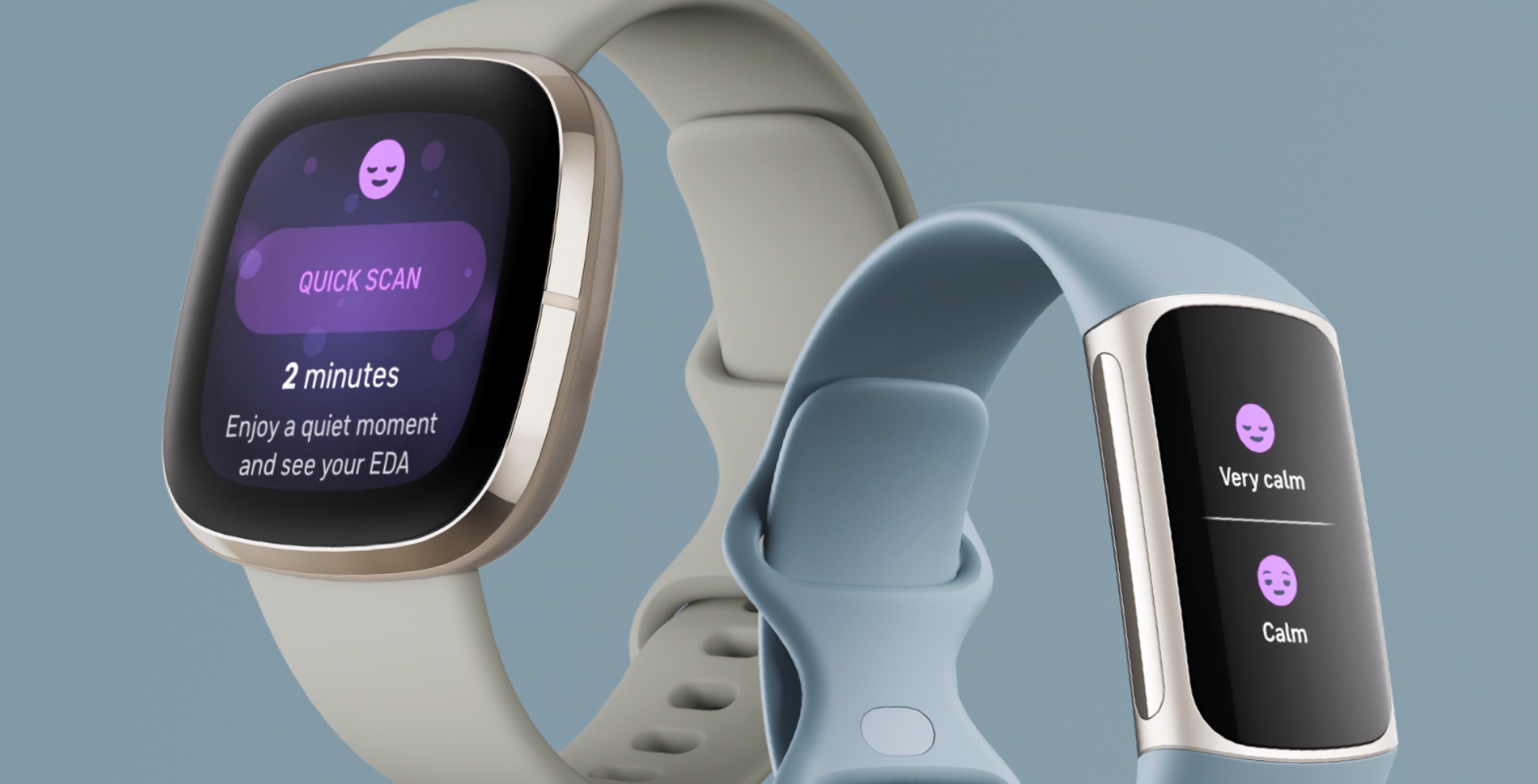Fitbit just revealed the most surprising thing about our health during the pandemic
A Q&A with Fitbit’s co-founder and CTO Eric Friedman

Far more than just tracking how many steps you’ve taken, or how many calories you’ve burned, the best fitness trackers have adapted to give us insights into our overall health. One relatively new metric to be monitored by trackers and watches, however, is stress.
Between the pandemic, the rising cost of food and gas, and even existential threats to the planet, it’s no wonder that people are feeling the effects of stress more than ever before. A survey conducted by the American Psychological Association (APA) in 2020 concluded that Americans were facing a national mental health crisis, following the impact of the Covid-19 pandemic. The report also highlighted the long-term consequences of elevated stress, especially on the younger generations.
Continued exposure to stress has been proven to have negative effects on both your physical and mental health. Stress has been linked to mental health conditions including depression, anxiety, and sleep problems, but also serious physical effects, such as an increased risk of heart attack, stroke, high blood pressure, and weight gain. But how can wearing a fitness tracker help?
To find out more about how the best Fitbits measure stress, and why this even matters on a day-to-day basis, we sat down to chat with Fitbit’s co-founder and CTO, Eric Friedman.
Why should Fitbit wearers be tracking stress?
People think stress equals bad, but there's actually lots of good stress.
Eric Friedman, Fitbit
“I think stress is really interesting, also misunderstood. People think stress equals bad, but there's actually lots of good stress. For example, if you run really hard in a race, that puts a lot of strain on your body. Or, for example, if we look at the physiological reactions your body tends to go through when someone sings you a Happy Birthday song or you're riding a roller-coaster, both actually exhibit really stressful events, but don't have the same physiological long term effect of other types of things, whether it be a war zone or constant frustration at work.
“One of the things that I learned through Fitbit was some of the anatomy of the body. Obviously the nervous system is an electrical system. You've got a chemical system, all the chemical balances. You've got various electro-mechanical systems of muscles. And so your largest nerve in the human body is your vagus nerve and it's on your heart. That means that we can actually look for electro interference in that nervous system to understand your body. And that's actually what we're doing through heart rate variability (HRV) and some of these other measurements. So I think stress is really important.”

Why did you decide to add the stress management score to Fitbit devices?
“Our journey through stress and to the stress score actually happened when we started working on heart rate. People might not be aware of this, but when we start working on heart rate on the wrist, most people including both investors, people within Fitbit and others, told us it was the dumbest idea. You either want heart rate on your fingertip which is super accurate, when you're in a coma not moving, or you want a chest wrap which is super accurate when you're running. But who cares about all-day heart rate?
Sign up to get the BEST of Tom's Guide direct to your inbox.
Get instant access to breaking news, the hottest reviews, great deals and helpful tips.
“We started off with heart rate, heart rate for exercise, sleeping heart rate, then we measured HRV around five to seven years ago with Charge 2, and we found scores were a really useful as way of getting people into the data. We started with the sleep score, now stress score and some of the other scores we have, and we found some people really liked looking at all those graphs, seeing the correlation, figuring out the things themselves, but others preferred just seeing a simple number — I think the scores make it motivational.
"As we start getting more and more sensors together, we’re also looking at how they relate and interact with each other"
Eric Friedman, Fitbit
“A lot of our score systems come out of our behavior change groups within the research team. People go to the doctor and the doctor says, 'You need to lose weight or stop smoking'. You go to the dentist, 'Hey you need to floss more or brush differently'. And people are just great at ignoring that type of information. People don't often like bad news so how do you give them that right message? We believe it’s by helping them dive into the data. As an engineer and a researcher, data is great, and it’s data that will drive behavior change. Ultimately, as a product company, we’re trying to help people live healthier lives. If we don't make a change to someone's life, there's no point in doing it.
You speak about users learning from data over time, what did you learn from Fitbit data and in particular stress scores during the coronavirus pandemic?
“One of the things that I found most interesting is when people started going through lockdown, their resting heart rate went down, not up. So they were highly stressed and they were exercising less, but yet their resting heart rate was going down. When we started trying to really unpack it, what we found is that people were actually going to sleep in a more consistent fashion.
“One of the things that I found most interesting is when people started going through lockdown, their resting heart rate went down, not up."
Eric Friedman, Fitbit
“Often people have one set of bedtimes Monday through Friday and a different set Saturday and Sunday. That's called social jet-lag. It's like flying from New York to California — you often don't feel very good after you get off that flight for a few days. And so we actually found out that people's resting heart rate was going down because they were being better at sleeping. And that ties into that whole idea that there's stress, both emotional and physical, there's exercise, there's sleep, there's how you eat, and it all ties together. If you push on any one or ignore all the rest, you’ll often find you're not actually driving to the right health outcome.”
In 2020, you added EDA scanners to Fitbit wearables for the first time — why?
“I think EDA, much like heart rate, is a new sensor and I think there's a lot of interesting value there. The value comes from two things — one is improved algorithms on top of the data and two is as users use it for longer periods of time, we can give people better context of what's going on, especially with something like EDA stress, where there's all kinds of confounding factors that can get in the way. It’s on Fitbit to help users unlock the value by showing the seasonality, cycles, all kinds of other types of fitness, that confound and change those signals.”
What do you think Fitbit are doing that your competitors aren't in that space, both in kind of tracking and in stress and in development?
“I think we're currently in a unique position, having both a stress and heart rate monitor, but I don't think we can rest on our laurels. Imitation is the sincerest form of flattery and we have been being heavily flattered for the last eight or so years, What's next is how we continue to add value, both for people who are buying the next gen device but also for people who are sticking with their current device.
“We just ran one of the world's largest clinical trials for AFib and that’s using HRV for a disease state analysis. That got cleared by the FDA and that can roll out across lots of devices, both new and existing, so I think that's also really exciting.”
Where do you see things going next? What do you think is the next thing we're going to put on our wrists?
“I'm always excited about our next sensor, but what actually excites me even more is the sensor fusion aspect. As we start getting more and more sensors together, we’re also looking at how they relate and interact with each other. That I think's a really powerful thing. You see temperature and your heart rate and your motion combining to feed into sleep. You see HRV, various motion, other things feeding into activity and how are you performing in your stress work. Things like that are really the future, like how do we fuse these things together.”

Jane McGuire is Tom's Guide's Fitness editor, which means she looks after everything fitness related - from running gear to yoga mats. An avid runner, Jane has tested and reviewed fitness products for the past five years, so knows what to look for when finding a good running watch or a pair of shorts with pockets big enough for your smartphone. When she's not pounding the pavements, you'll find Jane striding round the Surrey Hills, taking far too many photos of her puppy.
